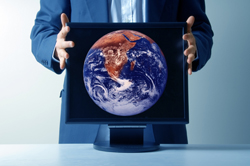Earth observation sharpens shared view of climate change
The earth surface is a key component of the climate system since it provides the coupling between the atmosphere and the land biosphere. Up to the present remote sensing is the most advanced method for mapping the land surface characteristics. For example, variables such as the surface temperature and reflectance, the leaf area (LAI) and soil adjusted vegetation index (SAVI) can be derived directly from satellite observations. Such data enable a wide array of investigations - from supporting disaster relief efforts to correlating environmental conditions with biodiversity, crop yield and famine. As with all products derived from satellite imagery, a crucial part of the development process is assessing the performance of the on-board instrumentation. Going a step further, the EAGLE project sought to evaluate the algorithms that are used to transform the raw satellite data into information required by the end-users. To this end, numerous field campaigns were carried out. Dedicated to simulating Sentinel-1 and -2 imagery as well as that of older missions like MERIS, these campaigns were carried out in France, the Netherlands and Spain. In addition to the acquisition of satellite data, airborne instruments were employed and extensive ground measurements were conducted over grasslands. Unique in scope and scale, these campaigns allowed scientists to acquire radar and optical data throughout the entire growing season. Airborne coverage of the sowing period right through to harvesting meant that it was possible to observe how the change in crop growth was reflected in the synthetic aperture radar (SAR) data. These multidisciplinary campaigns provided a unique opportunity to better interpret the eventual data products that satellites deliver. Their success also provided a glimpse of future applications that would lead to a better understanding of our environment. These insights should prove invaluable for Global Monitoring for Environment and Security (GMES) services related to land use, fresh water management and food security.







